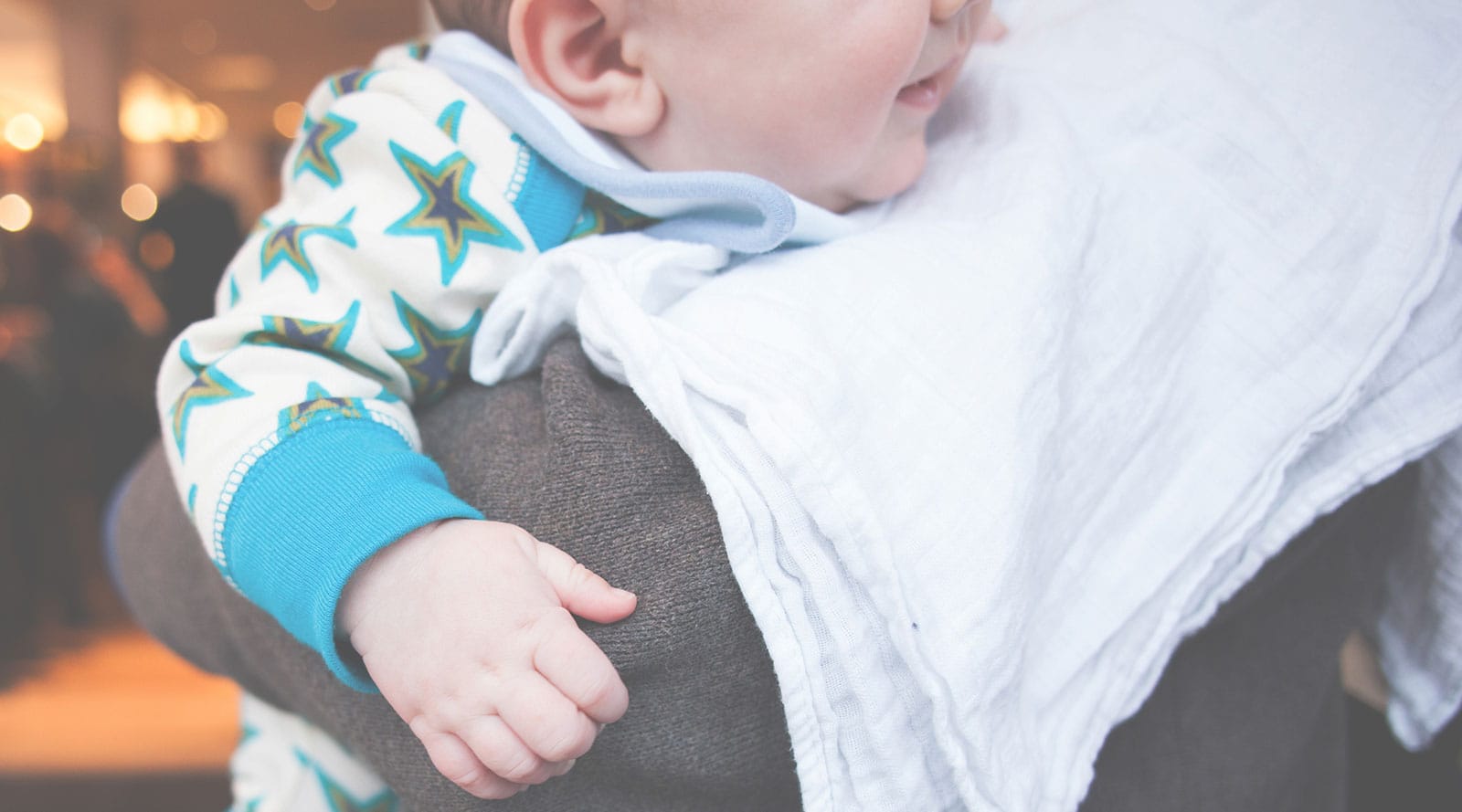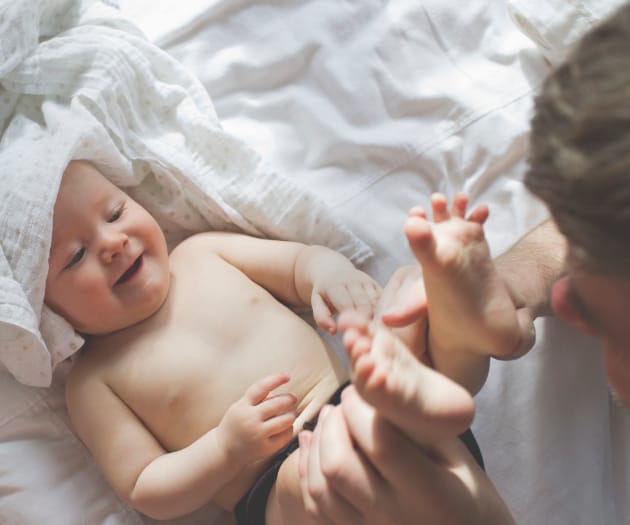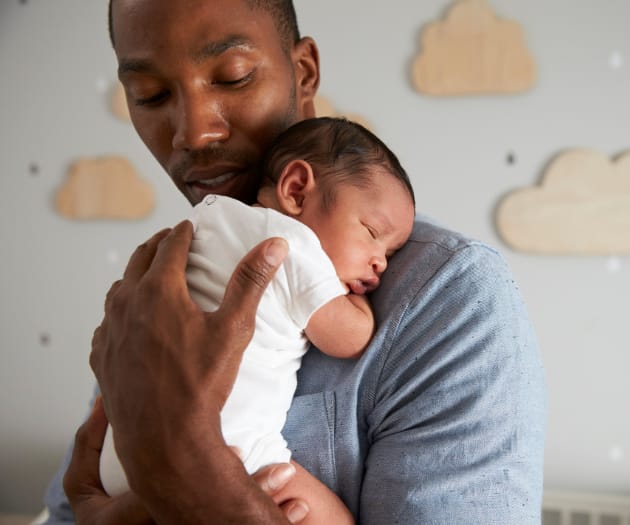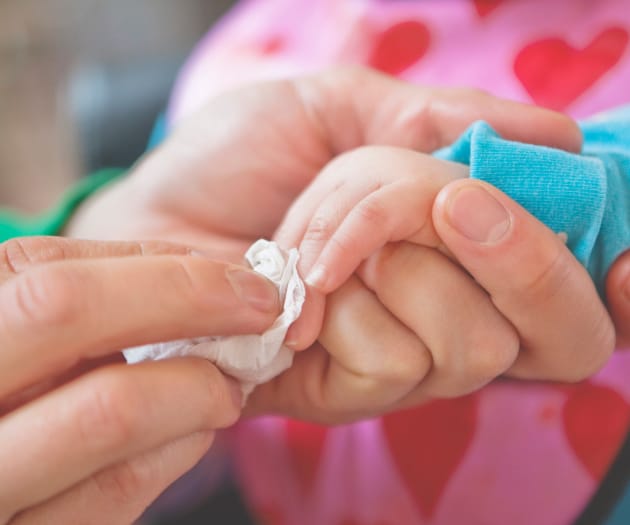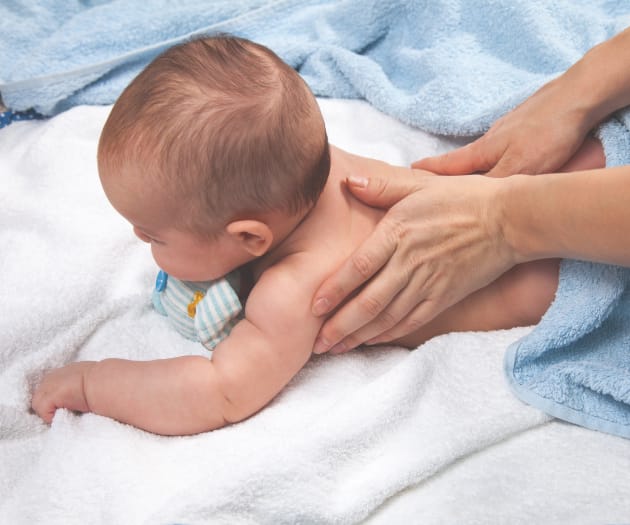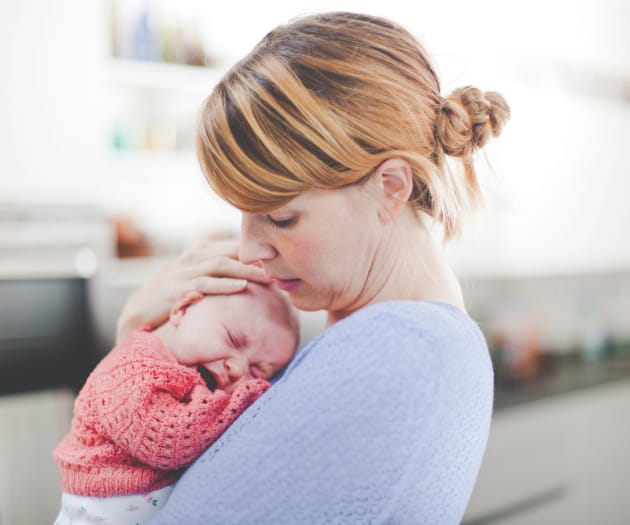Introduction
Whether breastfeeding or bottle feeding, your newborn will often take in air as they suck. Winding a baby helps bring the air up and keep the milk down and should help prevent painful trapped wind. Some babies need burping during their feed, others after – your baby will let you know.
How to burp a baby
There are three go-to positions for winding a baby. The first is holding them over your shoulder, with one hand under baby’s bottom and the other hand supporting their head.
The second is with baby sitting on your lap, one hand supporting their back and the other under their chin to support their head.
The third position is with baby lying across your lap face down, one hand supporting their chin whilst the other gently rubs or pats baby’s back.
All of these positions are great for relieving trapped wind in babies. Here are some tips to help you get the hang of it:
-
Baby might bring up some milk when you wind them. This is known as 'posseting'. Plan ahead with a cloth draped over your shoulder, ready to protect your clothes and mop up any mess. As long as your baby is content and putting on weight, spitting-up is nothing to worry about.
-
Once you’ve positioned your baby, rub or gently pat their back until they burp. Be patient, it may take a while. You may find a certain method of patting or rubbing works best for your little burper.
-
Once baby has been winded, they may want more milk now they have more room in their tummy. But don't force them to take more milk than they want – their body language will usually let you know when they’ve had enough.
-
If you're bottle feeding, try to limit the amount of air baby takes in by tilting the bottle to keep the teat full of milk.
-
Speak to your midwife, GP, health visitor or public health nurse if baby brings up milk after every feed or if they appear to be in pain or vomiting quite forcefully.
Responsive feeding – when to wind a baby
Babies only have small tummies, which can soon get full. Burping them while feeding prevents the build-up of uncomfortable trapped wind in babies. Your baby has a built-in appetite regulator which means they know when they’re full up. When this happens, they’ll give you the message via a series of physical and verbal cues.
Spotting these cues takes a little practice so we've put together a series of videos showing the most common cues to look out for.



